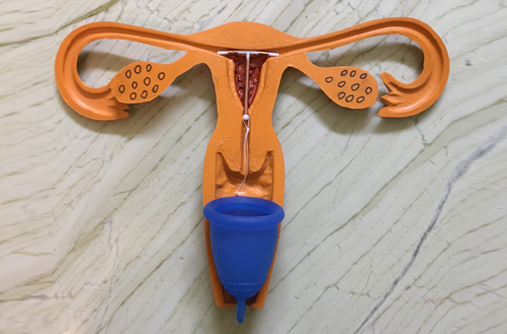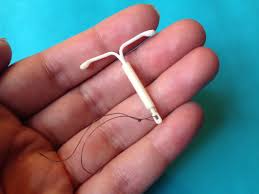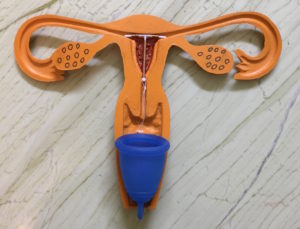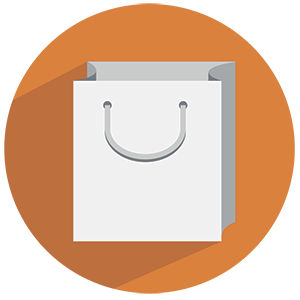A lot of women have concerns around using menstrual cup and iud – intrauterine device (IUD), commonly known as copper T.
Q. Is it safe to use a menstrual cup along with a copper T or IUD?
The short answer is Yes. However, you should always discuss your situation with a gynecologist, in most cases you just have to be a little more aware of your body and the devices you are using and follow basic personal hygiene.
As you can see from the photograph below, an IUD is placed inside your uterus to prevent pregnancy, whereas a menstrual cup sits a little lower in your vagina. Your uterus and the vagina are separated by the cervix (learn about female reproductive system). The IUD comes with removal threads that hang down through the cervix and sit at the top of your vagina. If you are planning to use these two devices together, you must consult your gynecologist and ask her to cut the threads of IUD short so that they do not get pulled while you remove the cup.
There are always some chances of an IUD becoming expelled or dislodged (mostly during first 3 months of insertion), but this study performed in 2011 of 930 women in Canada shows that the use of menstrual cups or tampons during menstruation along with the IUD, did not increase the chances of expulsion of the copper T / IUD. You must be aware of the removal of threads /IUD strings and careful during insertion and removal of your cup.
Below are a few tips that will guide you on using these devices together:
1. First get comfortable with the copper T / IUD: As the chances of an IUD getting expelled are higher in the first 2-3 months, give your IUD two menstrual cycles to settle into place before you start using a menstrual cup.
2. Keep an eye on those strings: Once your copper T is inserted, you should regularly check the strings (especially before and after menstruation) to make sure it is in place and hasn’t moved. As mentioned before, if you find them too long and think that they may interfere with your menstrual cup then you should ask your gynecologist to cut them a little shorter.
3. Check your cervix location: It is a good idea to check the location of your cervix during periods and select a menstrual cup of appropriate length. Shorter cups are less likely to interfere with your IUD. Learn how to measure your cervix. Once you know the length of your cervix, you can select a menstrual cup of appropriate length.
4. Low cervix? Be careful: If you have a low cervix, then you must make sure that the strings of your IUD are inside the menstrual cup and that they do not get stuck between the vaginal walls and rim of your cup. Before removing the cup, run your finger around the rim to make sure you do not pull the string. Women with very low cervix may also consider using reusable cloth pads instead of menstrual cups.
5. Release the suction before removal: It is the best practice to break the seal of menstrual cups with vaginal walls before removal, and it is even more important when you are using a menstrual cup with an IUD. Every time you remove the menstrual cup, check that the string is not stuck between the rim and vaginal walls, then pinch the base of your cup to release the suction and gently remove the cup.
You can also watch this video to learn more:






